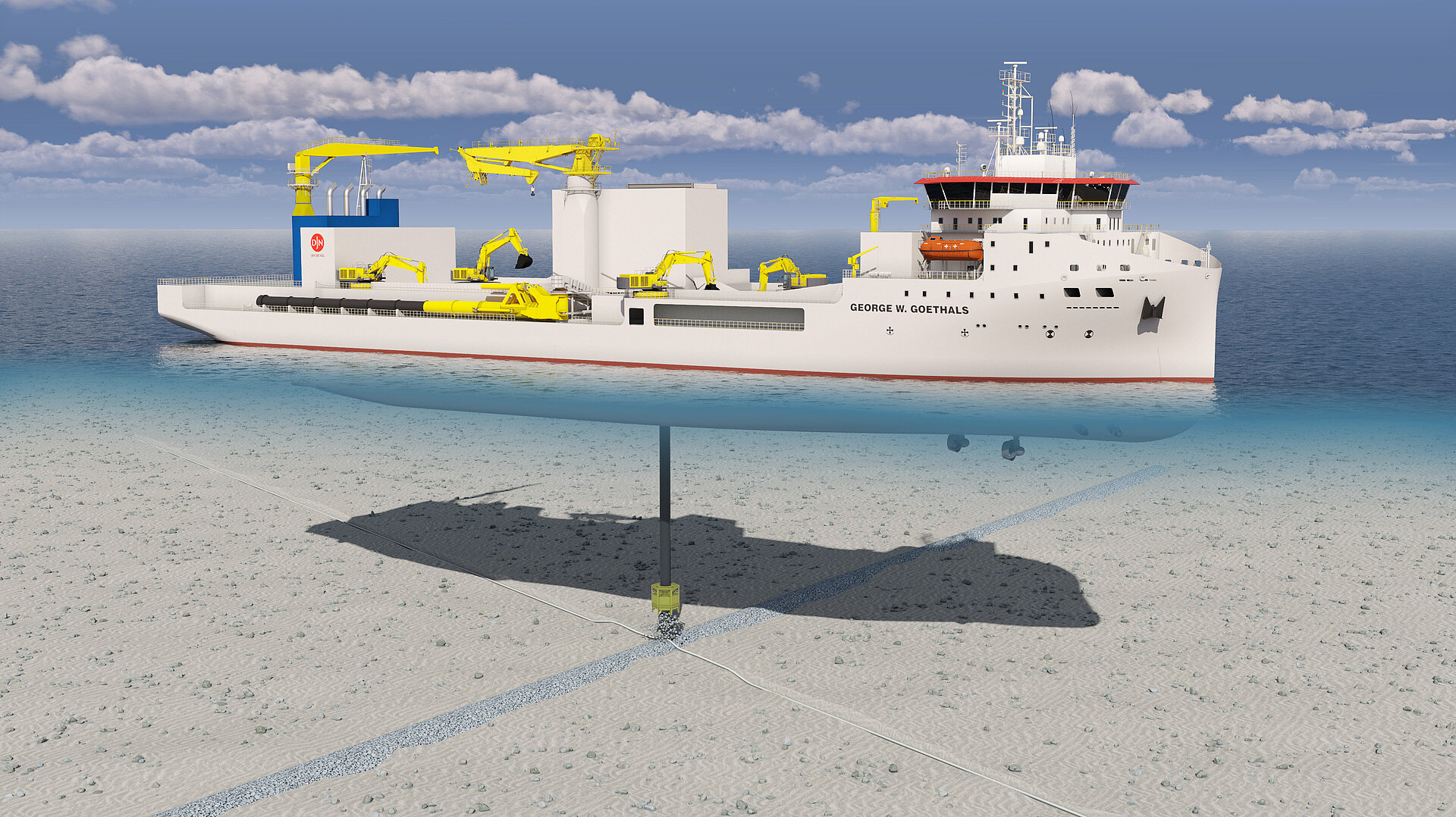
Jan de Nul orders new vessel to protect subsea infrastructure

The vertical fall pipe system enables work to be carried out at depths of up to 400 m (Source: Jan De Null)
Belgium’s marine and offshore engineering company, Jan de Nul, has ordered its largest rock installation vessel so far. The 37,000dwt George W. Goethals will be deployed to protect of subsea energy grids and critical offshore energy infrastructure. The vessel will be the company’s third rock installation vessel and will take total capacity to more than 100,000 tonnes.
Subsea cables are critical to the world’s energy, data, and financial systems. But their strategic importance makes them vulnerable to sabotage or damage. Various incidents in the Baltic Sea, for example, have led to NATO setting up the Baltic Sentry project to monitor the area while specific incidents are investigated.
The ultra-low emission vessel will comply with European Stage V emission standards for inland waterway vessels as well as stricter EURO VI requirements. Its engines will be capable of operating on biofuel and green methanol and the hybrid power plant will have generators and batteries for peak shaving, load smoothing, spinning reserve, and optimised engine loading, the company said.
Four electric excavators will be used to load large rocks. This will increase efficiency, bypassing the need for dedicated onshore conveyor belts or cranes. A flexible vertical fall pipe and an inclined fall pipe system will enable the accurate installation of large rocks to a depth of 400m.
The company’s director of Offshore Energy, Philippe Hutse, commented: “A cutting-edge vessel like this represents a major investment and a carefully considered decision … Protecting the infrastructure that support offshore energy production and transmission is essential to achieve this goal. With this new vessel, we are shifting into a higher gear to meet that challenge head-on.”
George W. Goethals was a US military officer and civil engineer who came to fame in the decades-long construction process prior to the opening of the Panama Canal in 1914.
